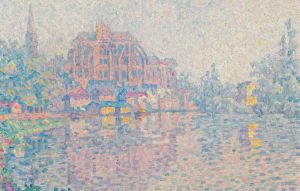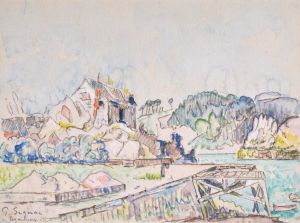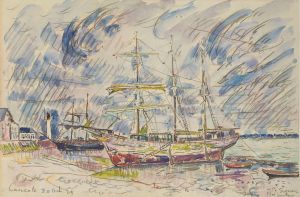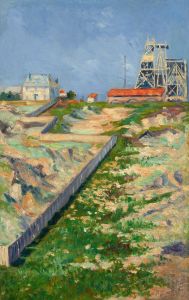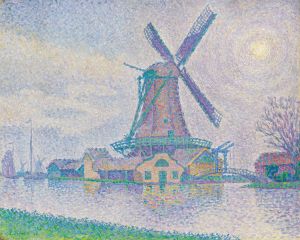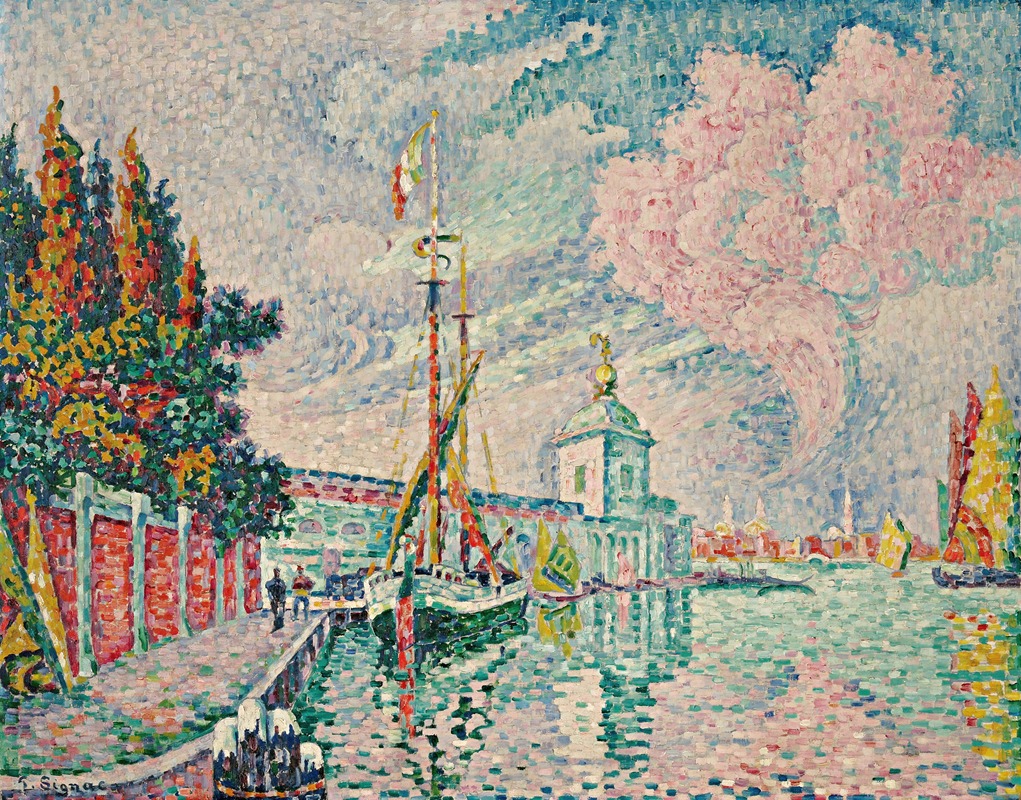
La Dogana, Venise
A hand-painted replica of Paul Signac’s masterpiece La Dogana, Venise, meticulously crafted by professional artists to capture the true essence of the original. Each piece is created with museum-quality canvas and rare mineral pigments, carefully painted by experienced artists with delicate brushstrokes and rich, layered colors to perfectly recreate the texture of the original artwork. Unlike machine-printed reproductions, this hand-painted version brings the painting to life, infused with the artist’s emotions and skill in every stroke. Whether for personal collection or home decoration, it instantly elevates the artistic atmosphere of any space.
Paul Signac's "La Dogana, Venise" is a captivating example of the artist's exploration of color and light through the technique of Pointillism, a style he helped pioneer alongside Georges Seurat. Painted in 1904, this work captures the iconic customs house in Venice, Italy, known as La Dogana di Mare, which is situated at the junction of the Grand Canal and the Giudecca Canal, offering a panoramic view of the Venetian lagoon.
Signac was deeply influenced by the vibrant atmosphere and unique light of Venice, which is evident in this painting. The city had long been a source of inspiration for artists due to its picturesque canals, historic architecture, and the interplay of water and sky. In "La Dogana, Venise," Signac employs his signature technique of applying small, distinct dots of color to the canvas, allowing the viewer's eye to blend them at a distance. This method not only captures the shimmering quality of the Venetian light but also imbues the scene with a sense of movement and life.
The painting depicts the Dogana with its distinctive tower and golden globe, set against the backdrop of a luminous sky and the gently rippling waters of the canal. Signac's use of color is particularly noteworthy; he employs a palette of soft blues, pinks, and yellows to convey the tranquil yet vibrant atmosphere of Venice. The reflection of the buildings in the water is rendered with meticulous attention to detail, showcasing Signac's mastery of the Pointillist technique.
Signac's interest in Venice was part of a broader fascination with maritime subjects, which he explored throughout his career. As an avid sailor, he was drawn to the sea and often depicted ports, harbors, and coastal scenes. His travels to Venice in the early 20th century provided him with ample material to explore these themes, and "La Dogana, Venise" is one of several works he created during this period that capture the city's unique charm.
The painting is also significant within the context of Signac's artistic development. By 1904, he had fully embraced the principles of Neo-Impressionism, which emphasized the scientific study of color and light. This approach was informed by contemporary theories of optics and color perception, which Signac and his contemporaries believed could bring a new level of harmony and luminosity to their work.
"La Dogana, Venise" is held in high regard not only for its technical brilliance but also for its ability to convey the serene beauty of Venice. It stands as a testament to Signac's skill as a colorist and his dedication to capturing the essence of his subjects through innovative techniques. Today, the painting is part of the collection at the Musée d'Orsay in Paris, where it continues to be admired by art enthusiasts and scholars alike for its contribution to the Neo-Impressionist movement and its enduring depiction of one of the world's most enchanting cities.







